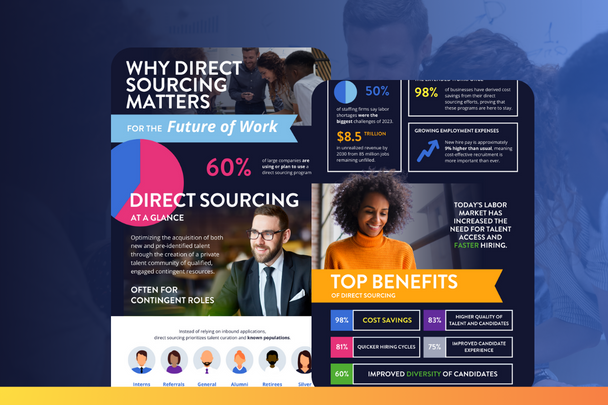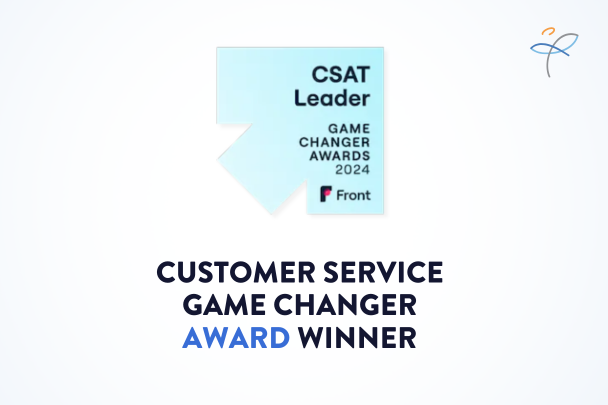How to Improve HR Effectiveness in the Age of the Blended Workforce
HR professionals received a crash course in effectively managing a nontraditional workforce when the pandemic hit. Suddenly, tradition went out the proverbial window as Zoom windows popped up all over. Everyone and everything was new and different. Yet, it all worked out, because HR and the workforce learned to adapt to a new reality. One thing hidden under all the chaos was that the workforce had been growing increasingly nontraditional for years. Many HR professionals are responsible for a shrinking pool of traditional employees, while the number of nonemployee consultants, freelancers, and other contingent workers grows. We know that HR is responsible for employees, but who has responsibility for all the nonemployees in today’s “blended” workforce? And how can HR effectively manage a blended workforce?
In some organizations, individual managers take responsibility for the contingent workers on their teams; in others, procurement takes the lead, viewing contingent labor as a purchased commodity; in still others, HR manages both employees and nonemployees. Each of these scenarios brings its own set of challenges, chief among them, a lack of visibility, consistency and compliance for the entire workforce. Cost is always an issue as well. HR leaders at the world’s largest employers have solved these challenges by outsourcing the acquisition and day-to-day management of the contingent workforce to a third-party expert ― a managed services provider (MSP). Doing so frees HR to focus more on how to leverage its blended workforce for strategic advantage.
What is a blended workforce?
Since the pandemic ushered in a massive experiment in remote work, many people would define a blended workforce as a hybrid entity, with a combination of employees working both onsite and off. Long before COVID-19 rocked the world, however, the majority of businesses were relying on flexible labor solutions to fill in skills gaps, gain highly sought-after specialized expertise, and create greater agility in responding to market opportunities. Addressing these needs through the use of contingent labor resources ― including staffing agency contractors, independent contractors, and solutions consultants ― led organizations to create increasingly blended workforces of employee and nonemployee talent in ratios from 20/80 to as high as nearly 50/50.
The risks HR faces in managing a blended workforce
Ask any HR leader questions about how many people they employ, where they work and what they do, and they will have ready answers. The same questions may lead to head scratching and hesitation in relation to nonemployees, and that ratchets up the risk factors. And it all carries a potential cost. For example:
- Lack of oversight. Contingent talent is more likely secured by multiple managers, and HR may not have been consulted before or after the fact. This translates to limited visibility, inconsistent approaches, and higher risk.
- Lack of visibility. HR may be out of the loop as to how many contingent workers are on the job, where they work, or what they actually do, to say nothing of how much the company is spending for them.
- Lack of consistency. It is also likely there is little consistency or established standards for screening talent, background checks, on- and off-boarding, timekeeping, or payment records.
- Co-employment risk. Sometimes, contingent workers are effectively walled off from employee teams, but in any workplace where collaboration and collegiality are prized, teams are mixed to the point that it is difficult to distinguish employee talent from non-employee talent. This often leads to situations where contingent workers are included in employee meetings, attend company-sponsored events, and are invited to take advantage of selected employee benefits and perks, as though they are company employees.
- Higher cost. Whether the cost to acquire and manage contingent workers is evident within departmental budgets, there is an internal administrative burden to be borne. Higher cost is also associated with sourcing workers through multiple agencies at a range of bill rates, despite how similar the jobs are. More importantly, the misclassification of workers, for example, classifying an employee as an independent contractor, can lead to six- or seven-figure fines.
How HR can manage nonemployees more effectively
Contingent workers are the exceptions to the rule in the HR universe. Every time HR has to split its time and resources to address non-core needs, there is a risk that its primary focus and function can become diluted or fractured. To maintain the right focus on employees, HR can outsource contingent workforce management to a third party expert.
An initial step to more effectively manage contingent workers which have been pre-identified, e.g., former employees or interns, would be to place them under the auspices of an employer of record (EOR). This solution removes the administrative burden associated with nonemployee talent. It offers digital onboarding, pre-employment screening, timesheet management, and invoicing, in addition to managing tax obligations and compliance issues.
An MSP solution is more comprehensive. It centralizes and standardizes all contingent talent acquisition, establishing consistent processes and standards for quality and performance with universal applicability to all talent suppliers and all contingent workers, including payrolled workers. An MSP rationalizes bill rate fluctuations across suppliers, leading to lower overall cost. It ensures compliance, increases operational efficiency, and simplifies contingent workforce management, freeing HR to focus more on strategic issues.
How an MSP contributes to a more effective HR function
An MSP partner acts as an extension of the HR team. HR sets policy and the MSP adapts it for the contingent workforce. The result is a clear divide between employees and nonemployees, but greater consistency in how all talent is acquired, on-boarded, and managed.
When HR partners with an MSP, it gains enterprise visibility, making it far easier to understand the makeup of the entire workforce and how best to deploy resources and plan for the future. When an MSP partner is managing the contingent workforce, HR has the freedom to focus on the best ways to align the entire workforce with business strategy. That makes HR a more valuable contributor to the organization.
How should HR partner with an MSP to optimize results for the organization?
Beyond some of the basic benefits of greater visibility, compliance, reduced risk and cost, an MSP can elevate your contingent workforce program through collaboration and partnership. An MSP partner brings unique expertise and knowledge to the organization. Based on experience with multiple contingent workforce programs, HR can tap into an MSP partner’s knowledge of best practices and prevailing trends in managing a blended workforce. As an example, an MSP partner can help HR analyze roles and functions to determine which jobs are best suited to contingent talent vs. employed talent. By understanding a company’s plans for future growth, an MSP partner can help identify the right talent pools to support growth.
When an MSP is a trusted partner, HR can be assured of achieving the right balance and focus for all components of the workforce. No one is orphaned or neglected. The contingent workers who support the business are as carefully managed as the employed workforce, but in a distinctly different way. The blend of employee and contingent talent ensures the organization can optimize all of its talent resources to advance critical business goals.
Look for upcoming posts on partnering with an MSP to scale your contingent workforce to support growth and all the ways an MSP can help control costs. Explore technology options here.








